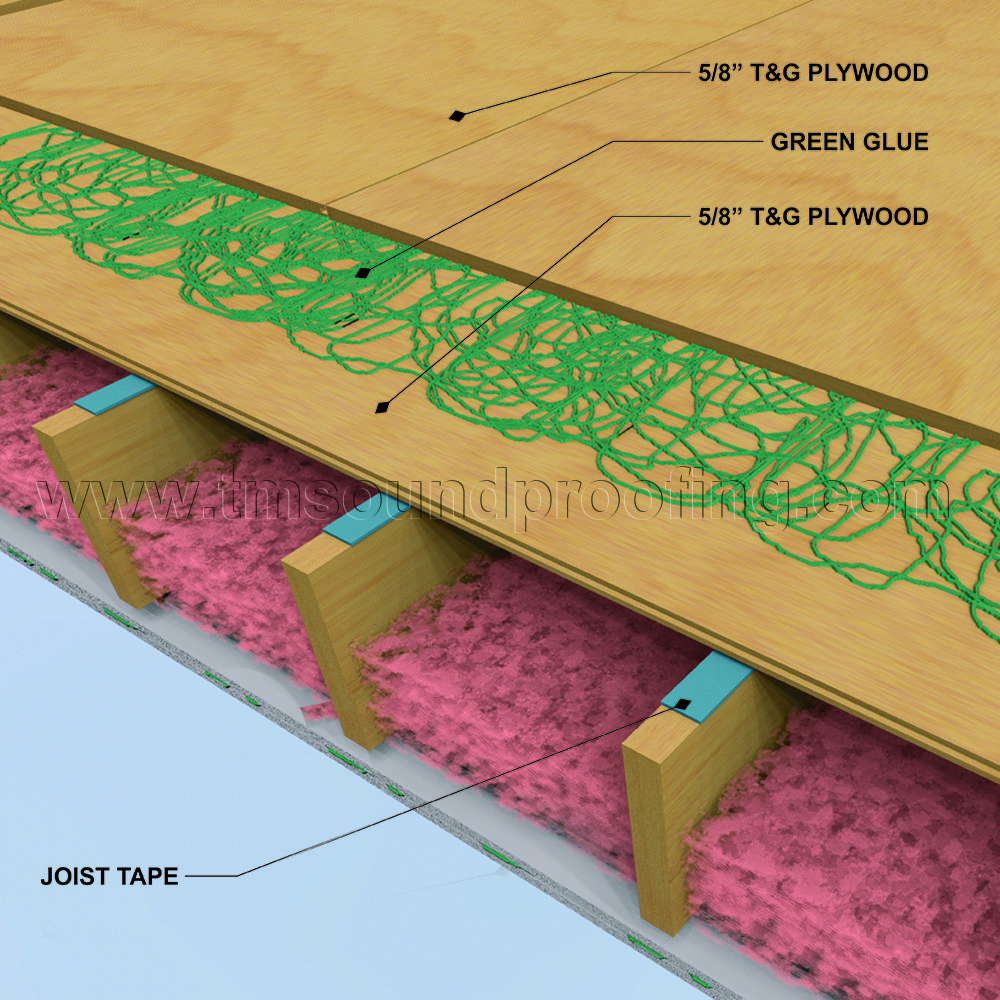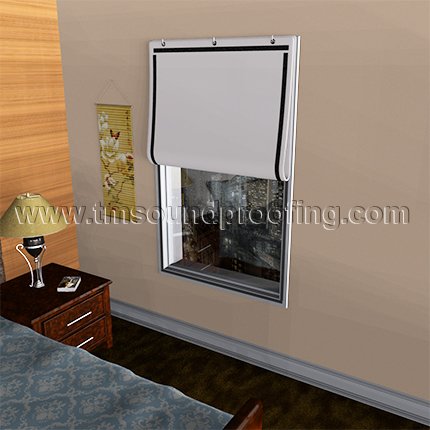How to Soundproof a Room: Walls, Ceilings, Floors, Doors & Windows
How to Soundproof a Room: Complete Step-by-Step GuideSoundproofing a Room is one of the most searched for topics and the subject of many frequent phone calls and emails that we receive at Trademark Soundproofing. |
|
Topics Covered in this Article: |
|
Whether it is a ceiling in a condo, a master bedroom or a home office, people want their privacy and a noise free environment. If you want to reclaim your peace and quiet without having to move to the middle of an isolated field, then invest in soundproofing your room properly. This article includes a step by step application guide, with links to more detailed articles for each specific step. There are 4 basic sound control methods used on the ceiling, walls and floor; utilizing as many as possible will ensure superior results. Additionally, good sealing at the perimeters, outlets, doors and windows will prevent sound leakage from these vulnerable gaps. To achieve all four components you would need to have your room stripped down to the studs. On an existing room you would be able to achieve three of the components as outlined below. |
|
Component 1 - Walls & Ceilings: |
Insulation / AbsorptionYour walls / ceiling need insulation in them to absorb some sound.
Then insulate using Fiberglass Batt Insulation or Mineral Wool in between the studs. Wrap your HVAC with Duct Wrap. If your drywall is in place and you do not want to remove it, you can insulate by pumping cellulose into the walls. Your HVAC vents should be lined with duct liner. DecouplingYour walls / ceilings need to be decoupled to prevent soundwaves from passing through the structure.
If your drywall is already in place and you do not want to remove it we recommend not decoupling the wall. See our article on the Triple Leaf Effect. If you are trying to control footsteps or impact sounds coming from above then decoupling the ceiling is a must. Damping and MassYou want to add weight to your walls / ceilings / floors and you want to damp them. Damping dissipates soundwaves hitting the structure and stops them from traveling.
If your issues are in the walls, also add a second layer of drywall and Green Glue to the ceiling; sound can flank over walls via the ceiling. This is a must when there is an open air space above both rooms (e.g., attic or crawl space). Finishing / Sealing
Also seal around all electrical outlets with an Acoustic Electric Box Seal. Expected ResultsUsing insulation, decoupling, mass and damping together yields the highest performance, often 30+ STC points over a standard wall/ceiling. Using insulation plus mass and damping typically achieves about 80% noise reduction when done correctly. Learn More
|
|
Component 2 – Floors: |
FloorsNew Flooring
You can add a Rubber Underlayment before installing the finish floor. See the How To Soundproof Article for details. Carpeting
Hardwood FlooringInstall rubber underlayment beneath hardwood. If the hardwood is finished and must remain, focus on treating the ceiling below. |
|
Component 3 – Doors: |
DoorsDoors are often thin/hollow and leak around their perimeter. A solid wood door helps. You can also add a custom cut heavy-duty soundproof door panel. Moulding
Door PanelInstall a Soundproof Door Panel to add mass and seal edge gaps. Alternatively, glue a 1/2" MDF layer with Green Glue Compound. Perimeter Gasketing & BottomSeal jambs and header with a Soundproofing Door Gasket or Weatherstrip, and use a Sound-Rated Automatic Door Bottom. More detail: How to Soundproof a Door. |
|
Component 4 – Windows: |
WindowsWindows are another weak link for sound control. Secondary WindowInstall a second window behind/in front of the existing unit. Vision Lite KitConsider the Acoustic Vision Lite for a strong perimeter seal and thick glass. Soundproofing Curtain
|
|
Soundproofing Solutions for Today's Designs: |
Soundproofing Solutions for Today's DesignsOpen, hard-surface interiors (wood/tile floors, minimal curtains) reflect sound and carry it between rooms and floors. Soundproof doors thoroughly (especially gaps above/below) and add absorption using fabric-wrapped acoustic panels.
|
|
Sound control doesn't have to be complicated if you have the right Soundproofing Products and guidance. At Trademark Soundproofing, we offer top-quality products and expert support for every application. |



 If your studs are exposed, wrap your electrical outlets with
If your studs are exposed, wrap your electrical outlets with  If your studs are exposed, decouple your drywall from the studs with
If your studs are exposed, decouple your drywall from the studs with  Seal the perimeters of your walls and ceiling with
Seal the perimeters of your walls and ceiling with  For new construction, use insulation in floor joists, apply
For new construction, use insulation in floor joists, apply .jpg) Use
Use  A practical option is a
A practical option is a  Install
Install 